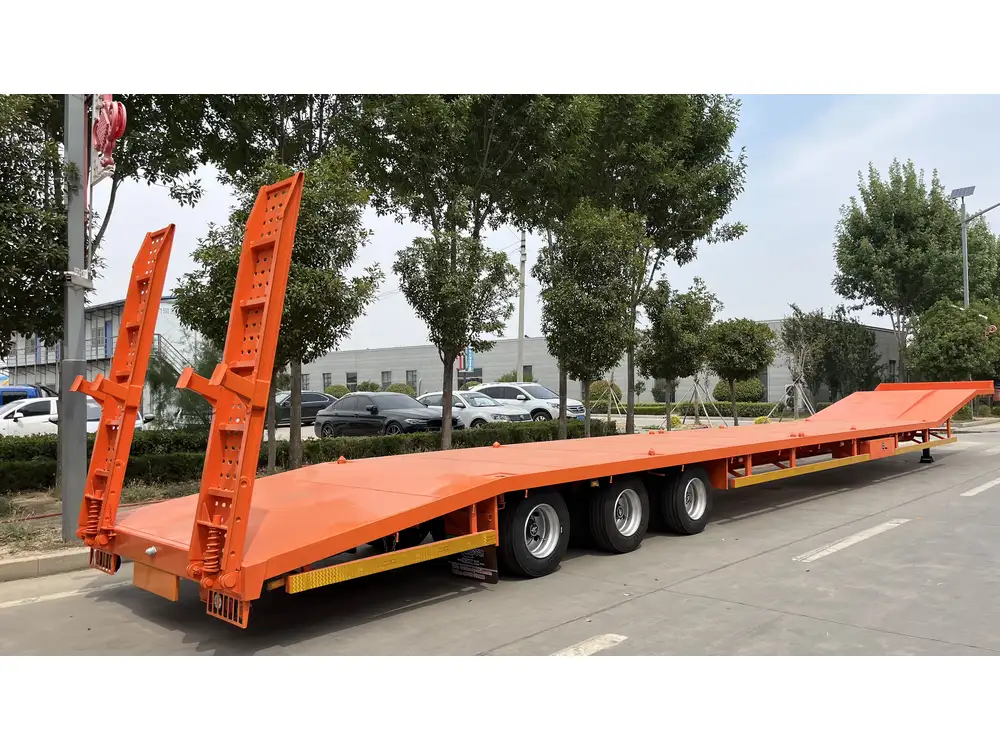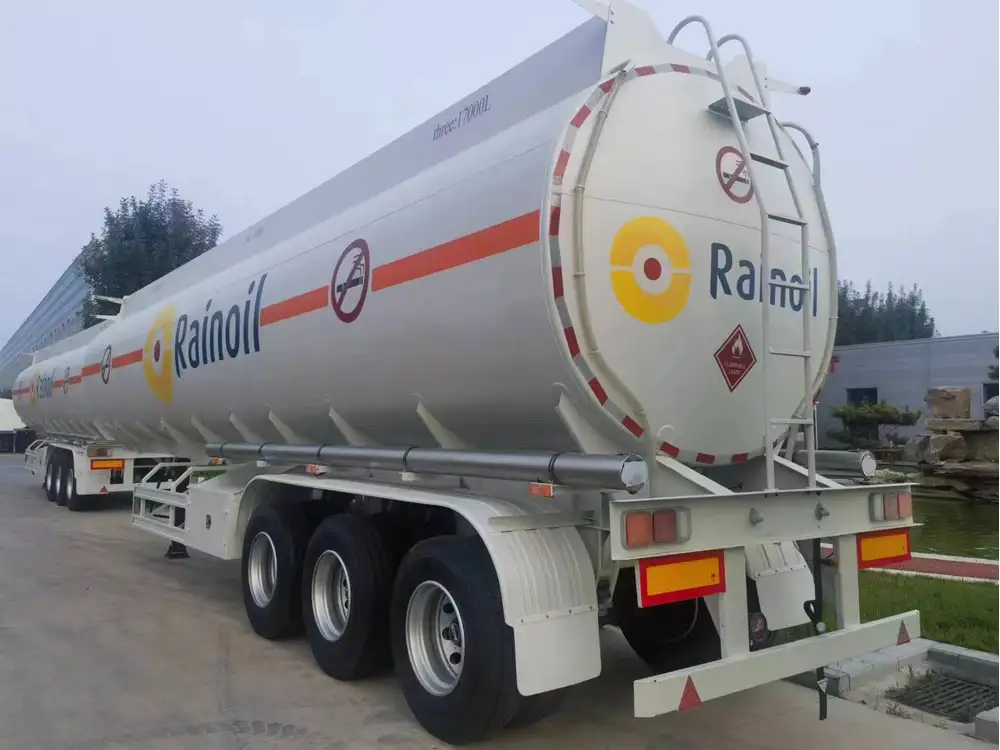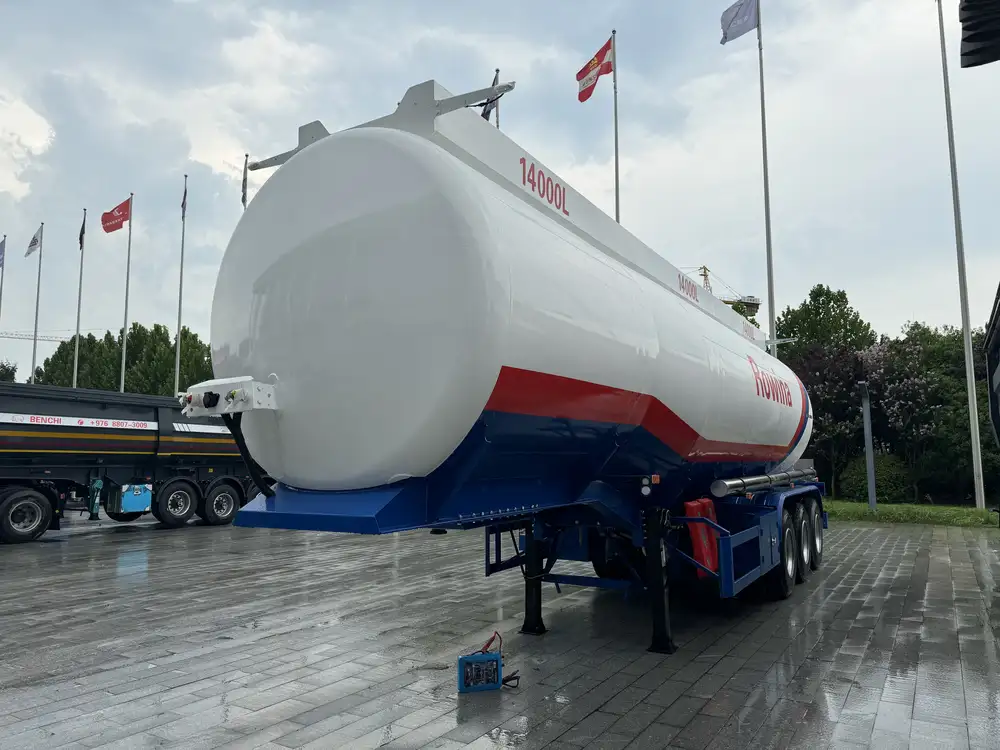In the realm of transportation, understanding the specifications of semi-trailers is crucial for logistics companies, manufacturers, and fleet operators alike. This guide delves into the nuances surrounding the standard sizes and dimensions of semi-trailers, ensuring that you are equipped with the necessary information for choosing the right equipment for your specific needs.
The Basics of Semi-Trailer Dimensions
To navigate the complexities of semi-trailer sizes, it’s essential to first grasp the foundational aspects. A semi-trailer is uniquely designed with no front wheels, relying instead on a truck or tractor to provide mobility. This design lends itself to numerous configurations, catering to an array of cargo types.
Standard Lengths of Semi-Trailers
When we talk about the length of semi-trailers, we typically reference the following configurations:
| Trailer Type | Standard Length |
|---|---|
| Van Trailers | 48 to 53 feet |
| Flatbed Trailers | 48 to 53 feet |
| Reefer Trailers | 48 to 53 feet |
| Tank Trailers | 40 to 53 feet |
| Lowboy Trailers | 20 to 30 feet |
Note: The Federal Highway Administration allows a maximum length of 53 feet for trailers used in interstate commerce. However, specific state regulations may permit variations.

Width and Height Specifications
The width and height of semi-trailers also play a pivotal role in determining their viability for specific cargo types.
- Width: The maximum allowable width for a semi-trailer is generally 8.5 feet (102 inches). This standard helps ensure compatibility with most roadways and bridges.
- Height: Typical heights range from 13.5 feet to 14.5 feet. Trailers exceeding 14 feet must adhere to specific regulations when traversing under underpasses or low-hanging structures.
Weight Limitations: Understanding GVWR
Beyond dimensions, another critical aspect is weight. The Gross Vehicle Weight Rating (GVWR) dictates how much weight a semi-trailer can legally carry, including the trailer itself.
| Trailer Type | Maximum GVWR |
|---|---|
| Standard Trailers | Up to 80,000 lbs |
| Specialized Trailers | Often more, depending upon state laws |
It’s integral to acknowledge that individual states may impose different regulations, impacting the exact parameters of these weight limits.
Key Comparisons: Trailer Types and Their Sizes
When considering the purchase or use of a semi-trailer, it’s beneficial to compare different types based on their dimensions, utility, and specific applications.

Van Trailers
Typical van trailers are enclosed and designed to protect cargo from external elements. They generally measure up to 53 feet in length.
Flatbed Trailers
Flatbed trailers are versatile and can accommodate various freight shapes and sizes. Their standard sizes mirror those of van trailers, ranging between 48 and 53 feet.
Reefer Trailers
Refrigerated trailers, or reefers, transport temperature-sensitive goods. Their standard lengths are similar to those of van and flatbed trailers but offer specialized insulation and refrigeration equipment.

Tank Trailers
For liquid transport, tank trailers vary significantly in size but adhere to a range between 40 and 53 feet in length. Their design must account for the safe transport of hazardous materials.
Lowboy Trailers
These trailers facilitate the transport of oversized equipment and machinery. Their lengths typically range from 20 to 30 feet, featuring a lower deck height to accommodate tall loads.
Considerations for Selecting the Right Semi-Trailer Size
Several critical factors must be evaluated when selecting a semi-trailer that meets specific operational needs:

Nature of Cargo
Is your cargo bulky, long, or sensitive to temperature? Understanding the dimensions and type of your cargo will help determine which type of trailer is best suited.
Compatibility with Equipment
Assess the tractor’s capabilities, including its horsepower and torque, to choose a compatible trailer that ensures safe and efficient transport.
State Regulations
Different states may have particular regulations concerning trailer dimensions, so it’s important to research local laws to avoid potential fines or penalties.

Loading and Unloading Requirements
Consider how your cargo will be loaded and unloaded. Loading docks, cranes, and forklifts may dictate the type of trailer needed based on height and design.
Common Questions Regarding Semi-Trailer Size
Addressing common inquiries can provide additional clarity for potential users:
What is the maximum length for a semi-trailer?
The federal maximum length is 53 feet, although some states may allow longer configurations for specialized vehicles.

Are there various sizes within the same trailer type?
Yes, many trailer types, such as flatbeds and vans, exist in different lengths and heights to accommodate various needs.
How does weight affect my choice of semi-trailer?
Understanding the weight of your cargo is essential, as exceeding the GVWR can lead to safety hazards and legal repercussions.
What is the impact of trailer height on operations?
A trailer’s height affects its maneuverability under bridges and overpasses. It’s crucial to ensure that your trailer height aligns with local infrastructure limits.

Future Trends in Semi-Trailer Design
The landscape of semi-trailer manufacturing is continuously evolving, influenced by technological advancements and changing regulatory frameworks.
Lightweight Materials
Innovations in lightweight materials are transforming conventional trailer designs. Utilizing aluminum, composite materials, and advanced polymers can reduce weight while maintaining structural integrity, enhancing payload capacity.
Telematics and Tracking Technology
The integration of tracking systems and telematics in semi-trailers is becoming prevalent. These technologies allow for real-time monitoring of cargo conditions and trailer performance, resulting in improved fleet management.

Sustainability and Environmental Compliance
With growing concerns about sustainability, manufacturers are focusing on eco-friendly designs. This includes more efficient aerodynamics to reduce fuel consumption and the incorporation of electric and hybrid drive systems.
Final Thoughts on Choosing the Right Semi-Trailer Size
Selecting the right semi-trailer is far from a one-size-fits-all decision; it demands careful consideration of numerous factors, from dimensions to regulatory compliance and cargo type. Whether transporting palletized freight, refrigerated goods, or oversized machinery, understanding the standard sizes and specifications of semi-trailers is paramount for operational efficiency.
Summary of Key Points
| Consideration | Importance |
|---|---|
| Cargo Type | Determines the trailer design needed |
| Dimensions | Must comply with federal and state laws |
| Weight Limitations | Adhering to GVWR is vital for safety |
| Regulatory Compliance | Varied by state. Research local laws |
| Future Trends | Stay updated on material and tech innovations |
By keeping these insights in mind, you can ensure that the semi-trailer you select aligns perfectly with your logistics strategy, optimizing efficiency and reliability in your cargo transport operations.



